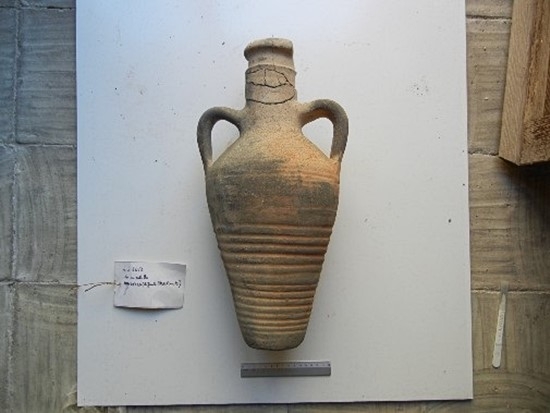Medieval Sicily's Islamic Wine Trade: Uncovering a Historical Paradox
New research reveals a thriving wine industry under Islamic rule
2024-01-09

In a groundbreaking study conducted by the universities of York and Roma Tor Vergata, researchers have unearthed compelling evidence of a thriving wine trade in Sicily during its Islamic occupation in the Middle Ages. This discovery not only sheds light on the economic practices of the time but also offers a new perspective on the cultural interactions in the Mediterranean region.
The period under investigation, ranging from the 9th to the 11th century, was marked by Islamic rule in Sicily. Researchers focused on the chemical residues found in medieval amphorae from this era. Surprisingly, these vessels, typically used for transporting liquids, showed traces of wine. This finding was particularly intriguing given the cultural context of the Islamic community, which traditionally did not consume alcohol.
Chemical analysis of broken ceramic material from these amphorae revealed that the containers once held wine, indicating not just local production but also a bustling trade. The wine's origins traced back to distant regions for the time, such as Sardinia and Pisa, suggesting a widespread and diverse trade network.
The involvement of the Islamic community in Sicily in wine production and trade, despite abstaining from its consumption, points to a pragmatic approach to economic activities. Professor Martin Carver from the University of York's Department of Archaeology remarked, "The alcohol did not, and does not, play a significant role in the cultural life of Islamic society. Yet, this medieval community not only flourished but also established a robust economic foundation, with the wine industry being a key component of their success."
This phenomenon indicates a nuanced understanding of trade and cultural practices, where economic benefits were prioritized despite religious and cultural norms.

The study also highlights the advanced marketing strategies employed during this period. Sicilian wine was given a distinct 'brand' through the use of a specific type of amphora, a practice reminiscent of modern branding techniques. This packaging choice allowed researchers to trace the paths of these vessels across the Mediterranean, mapping the trade routes used during this era.
Before Islamic rule in Sicily, there was evidence of wine trade, but it primarily involved imported wine rather than locally produced varieties. The Islamic community's shift from wine consumption to production and export marks a significant change in the island's economic landscape.
Professor Oliver Craig, leading the BioArCh center at the University of York where the research was conducted, expressed enthusiasm about the potential for future studies. "Now that we have a fast and reliable test for grape products in ceramic containers, it will be interesting to investigate the deeper, and even prehistoric, history of wine production and trade in the Mediterranean."
This study, titled "Chemical evidence for the persistence of wine production and trade in Early Medieval Islamic Sicily," published in the journal Proceedings of the National Academy of Sciences (PNAS), opens new avenues for understanding the complex history of the Mediterranean region and its economic practices.
Sources: The study's findings are detailed in the paper "Chemical evidence for the persistence of wine production and trade in Early Medieval Islamic Sicily," published in PNAS on March 9, 2021 (118 (10) e2017983118; https://doi.org/10.1073/pnas.2017983118).
Founded in 2007, Vinetur® is a registered trademark of VGSC S.L. with a long history in the wine industry.
VGSC, S.L. with VAT number B70255591 is a spanish company legally registered in the Commercial Register of the city of Santiago de Compostela, with registration number: Bulletin 181, Reference 356049 in Volume 13, Page 107, Section 6, Sheet 45028, Entry 2.
Email: [email protected]
Headquarters and offices located in Vilagarcia de Arousa, Spain.